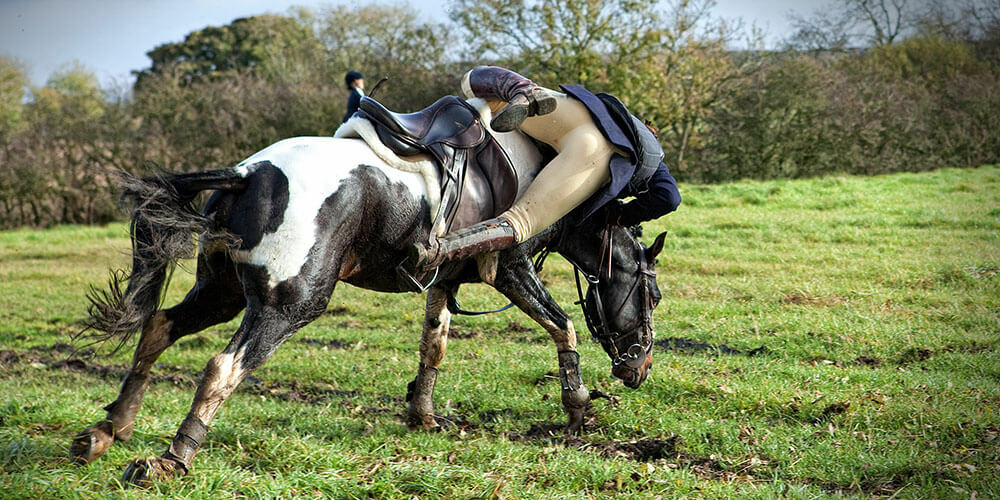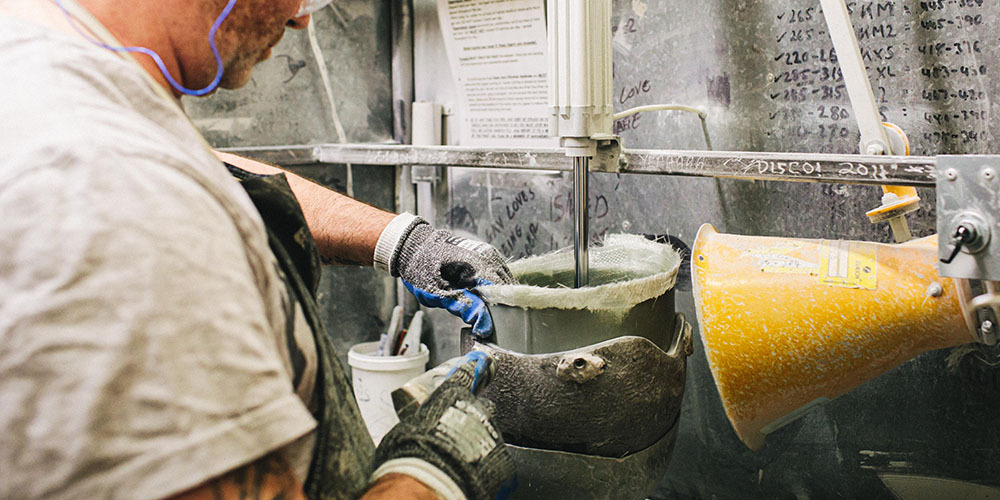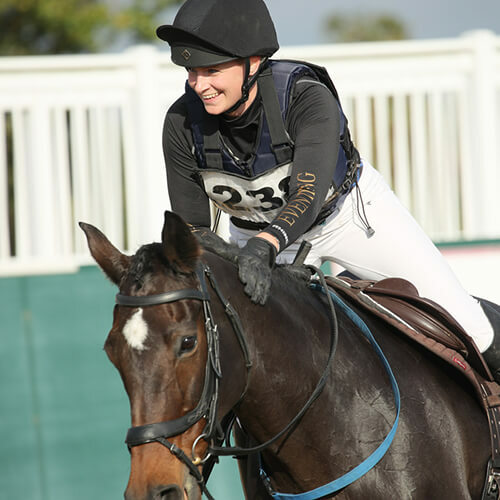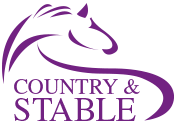How to choose a horse riding hat
Mar 7th 2022

Last year one of our bursary applicants Kc @averageamateureventing had a fall from her horse which unfortunately resulted in concussion. After the fall, and once she had recovered, we teamed up with Kc and invited her to the Country & Stable shop for a hat fit by our fully trained hat fitting team. Ensuring a riding hat is fitted correctly and you as a horse rider is educated in why, is vital for your knowledge and safety as a responsible rider. With the help of Kc we will guide you through how to choose a horse riding hat.
Why do I need a Horse Riding Hat Fit?
OK, so despite us all accepting the various risks that come with horses, we all want to minimise them where we can. And one thing most of us know, is how important the necessary safety equipment and clothing is – most importantly a riding hat. Did you know that head injury is one of the most common type of injury received from horse related accidents? And it is also one of the most dangerous. But how many of us give much thought to whether the hat we are wearing will give us the protection needed in the event of a fall?
Speaking honestly, whilst I have always made sure to wear a hat when riding. The importance of this was brought home to me earlier this year when I had a seemingly “normal” fall during a one-day event. This can be seen on @countryandstable Instagram page. Unfortunately, due to how I fell I was knocked out in the arena and subsequently diagnosed with concussion in hospital. I was lucky, my injury was minor, but this reminded me that you cannot be complacent. Following this, I have been determined to understand more about the importance of a good quality riding hat, and have called upon the wealth of knowledge at Country & Stable to help me do so.

What makes a riding hat?
Riding hats are effectively shock absorbers, a key piece of safety equipment offering you as much protection as possible. Concussion is one of the most common injuries a horse rider will sustain. Therefore, it is important to ensure you are wearing a correct fitting riding hat.
Riding hats are composed of a flexible brim and a hard outer shell, usually moulded from plastic, ABS, or fibreglass. This is then covered with shock absorbing polystyrene as well as a ventilated lining. All of which is then coated with another material for aesthetic value such as leather, velvet, or suede.
New technologies have been developed over the years an example of this is MIPS (Multi-Directional Impact Protection System) This has been added to some riding helmets as a brain protection system.

What is MIPS and how does it work?
MIPS is designed to add protection against rotational motion which is transmitted to the brain from impacts to the head, this is how most riders fall. This rotational both affect the brain and increases the risk for minor and severe brain injuries.
MIPS’ added protection system has been proven to reduce rotational motion when implemented in a helmet. This is done by redirecting energies and forces otherwise transmitted to the brain.
MIPS is an additional liner that is incorporated inside the riding helmet. The low-friction layer enables your head to move 10-15mm in all directions. This has been proven to reduce the rotational movement to the brain and therefore injury (particularly concussion and traumatic brain injury).

When to replace your existing riding hat:
So, we know we need to protect our heads, and therefore we dutifully put our riding hats on every time we ride. The old faithful, comfortable hat… but when should we replace it? The more obvious guide is if your hat suffers an impact, then it will need to be replaced immediately. I’m afraid they are somewhat one hit wonders these hats, and it has certainly served its purpose at that point. What’s more there is a very good chance you won’t be able to see the damage externally. But if the hat has absorbed an impact of any kind, then there will be damage to the internal structures. My Gatehouse hat, which without a doubt saved my life earlier this year, does not have a mark on it.
The less obvious guide is that it is in fact recommended that you replace your riding hat every 3-5 years. This is because after this length of time the fit and effectiveness may be compromised. Of course, the more you ride the sooner it may need to be replaced.
Ensuring you find the right sized riding hat:
Just as no two heads are the same, no two riding hats are the same. Not every hat will suit you, so it is important to have your hat fitted, as what you like the look of may not actually be suited to the shape of your head. I know, who knew? I headed to Country & Stable to have a hat fitted, I had mentioned that I quite liked the look of the Champion Skull caps. However as soon as we started trying them, it was so clear that they did not suit my head. Not to mention the fact that I told the super team at Country & Stable I fitted a 58cm hat, as I had been wearing a 58cm skull cap for a number of years. Turns out when measured professionally, I was in fact a 56cm!
You may find that an incorrectly fitting hat may cause pressure points, and discomfort. Of course, your riding hat should be comfortable, however it is very important that your hat fits snugly enough that the hat does not move up and forward over your eyes. It is also worth bearing in mind that in the first 1-3 months the padding will give. After this point the hat will be the perfect for you. You should be able to fit your pinkie fingers between the hat and your temples. As this area expands when you get hot there should be space to allow for this.
Measuring your head for a riding hat:
When buying your riding hat, there are a few considerations to take note of, including what size hat you should buy.
First off, ensure long hair is tied back in a ponytail at the nape of the neck.
Start by measuring your head to gauge which size hat will be the most suitable and comfortable for you to wear. To do this, grab a tape measure that takes a reading in centimetres. Then measure around the area just over your eyebrows and above your ears. If you wear glasses when you ride, be sure to put these on when measuring your head for a more accurate fit.
Your individual reading in cm can then be converted into a riding hat size, a metric such as 6 ⅛ which you will find when clicking the ‘size’ dropdown on any of the Country & Stable riding hat product pages.

Watch the full hat fitting process on Instagram.
The different styles of riding hat and safety standards
The style of riding hat that you buy needs to complement what kind of riding you participate in. For general hacking, dressage or show jumping, a standard riding hat will suffice. For hunting or cross-country competitions, you are unable to have a hat with a fixed peak for safety reasons. If you fall off and are wearing a hat with a fixed peak, the peak may bury into the ground. Meaning you are running the risk of a serious injury such as a broken neck.
Before buying a riding hat, we highly recommend checking with the authority overseeing your particular discipline such as ‘The Pony Club’ or ‘British Dressage UK’ as to which type of hats are permitted. It is worth noting that regulations may change from time to time and officials at some competitions may check your riding hat to ensure that it complies with their minimum requirements before allowing you to participate.
Does your riding hat comply
You should also always make sure your riding hat complies with the following standards:
- PAS015 2011
- BSI Kitemark
- VG1 01.040 2014-12
- ASTM F1163 04a
- SNELL E2016
- AS/NZS 3838 2006
Any hat with a British Standards Institute Kitemark must comply with one of these standards. The kitemark reassures you that the manufacturer has also undergone rigorous scrutiny by the BSI to meet safety standards.
Caring for your riding hat
Your riding hat will service you properly for a much lengthier period of time if you take the time to look after it properly. To care for your hat, use a soft brush, gentle soap. Use a splash of warm water, before allowing your riding hat to dry naturally. Always store your hat in a cool, dry place away from direct sunlight. When you’re on the move ensure your riding hat is safely stored during transportation to avoid any unnecessary damage. The best way to do this is in a padded hat bag.

So, to say this process has been eye opening would be a huge understatement. It has really shown me the importance of trying different brands and styles and going for the one that suits your head the best. I, for one intend to enjoy this sport not just for as long as possible but as safely as possible too.
Still thinking of buying your first riding hat? Or simply want to upgrade your existing hat? Discover the Country & Stable range of riding hats from leading brands including Charles Owen, Champion and Gatehouse.




